Images
Images of Living Robot Swarms can be downloaded here.
All images are released under a Creative Commons license.
Please credit: “Douglas Blackiston and Sam Kriegman”.

A group of living robots 24 hours after construction. They naturally form into spheres in saline solutions, and their surface becomes more irregular as they develop.
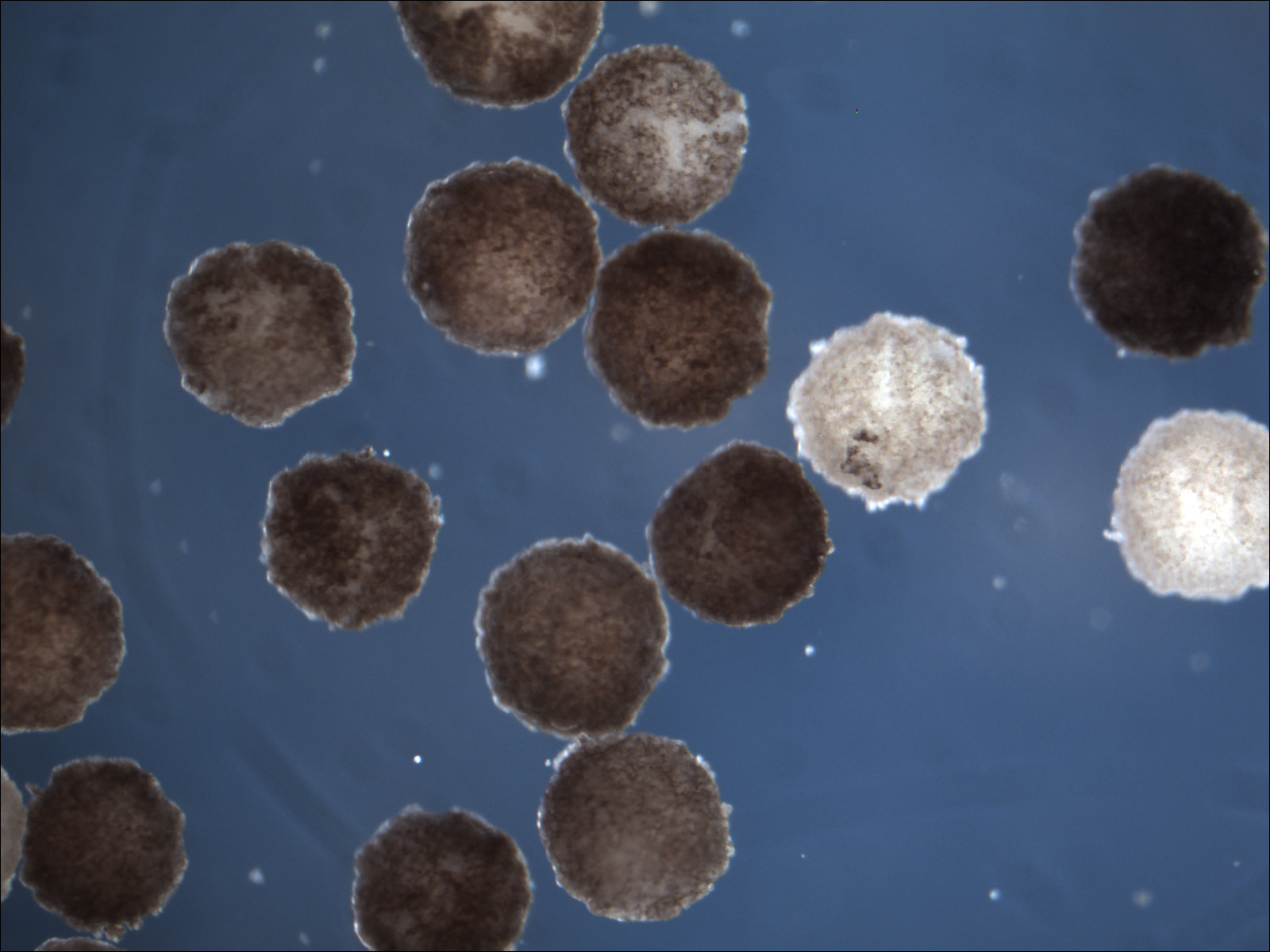
A group of living robots 48 hours after construction. They naturally form into spheres in saline solutions, and their surface becomes more irregular as they develop.
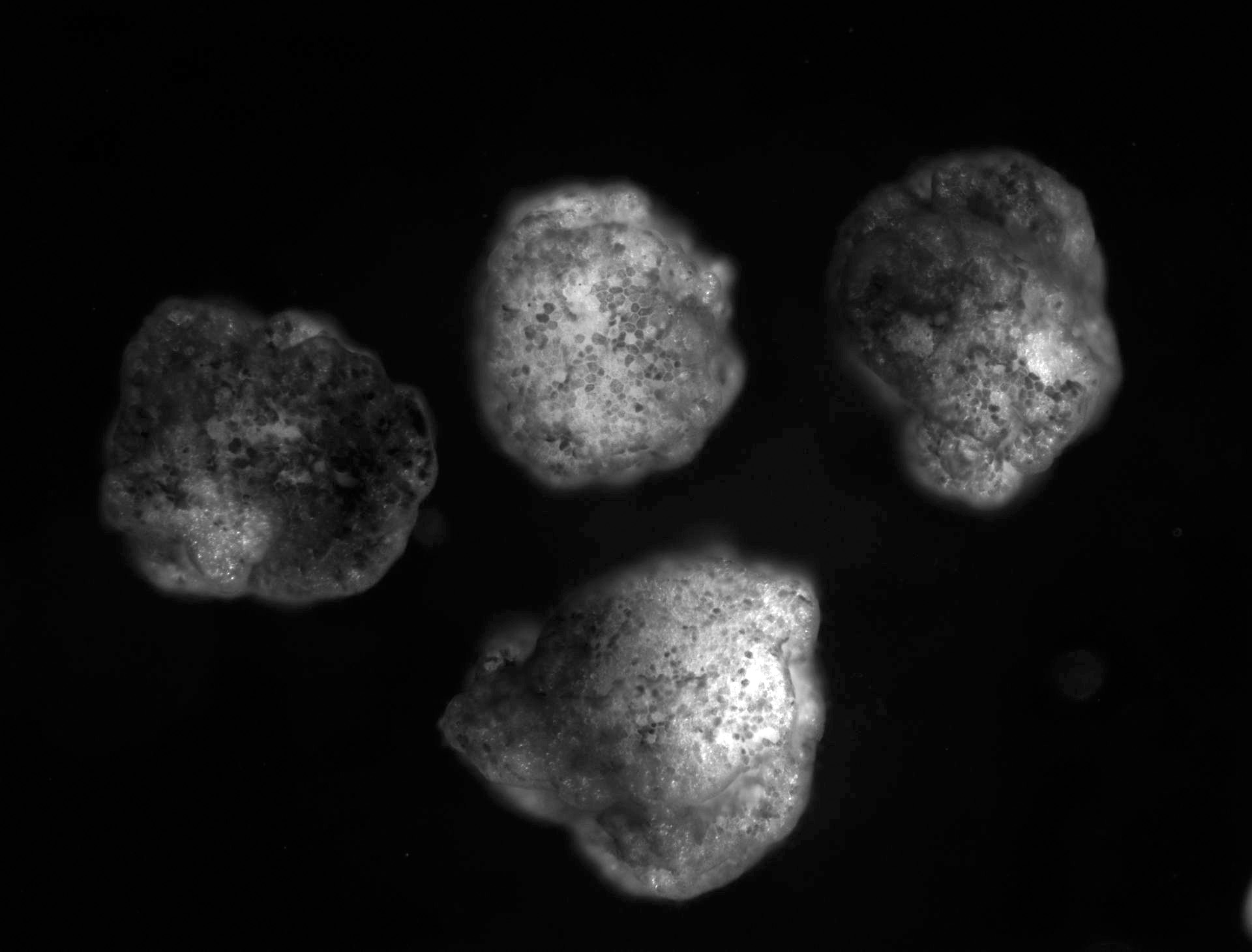
High magnification image of living robots.
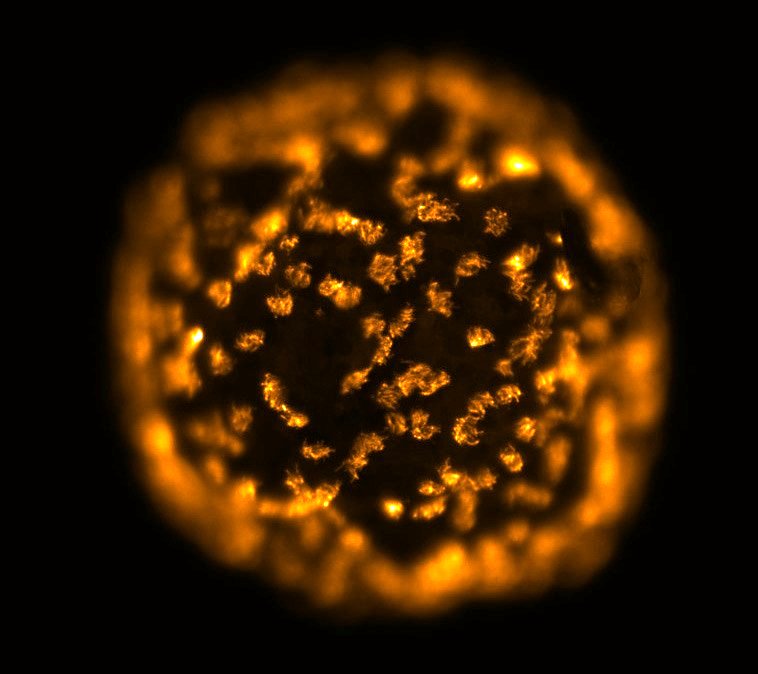
Our previous living robots moved by ‘walking’, which was driven by muscle contractions. Our new design allows individuals to ‘swim’ by the combined beating of many hairlike structures on the bot surface. These can be observed with fluorescent markers, which are seen in the above image as tufts of orange spots.
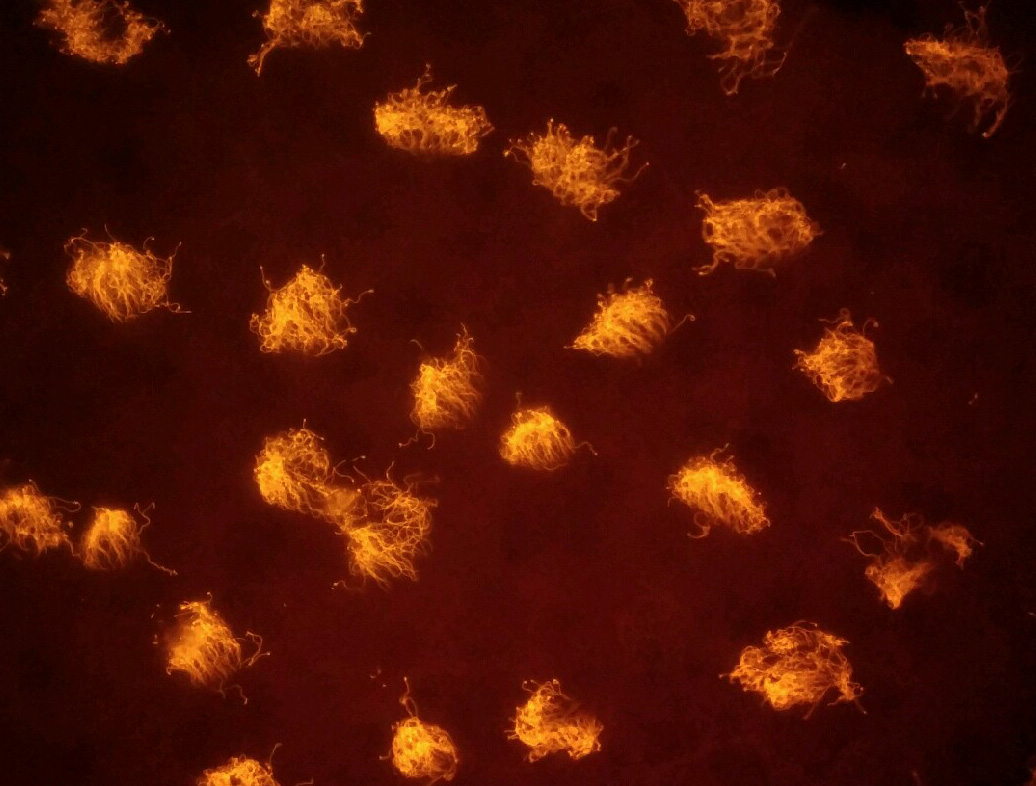
A high magnification image of the cilia (hair like structures that beat, allowing the living robots to swim) present on the surface of the bot.

A high magnification image of the cilia (hair like structures that beat, allowing the living robots to swim) present on the surface of the bot.
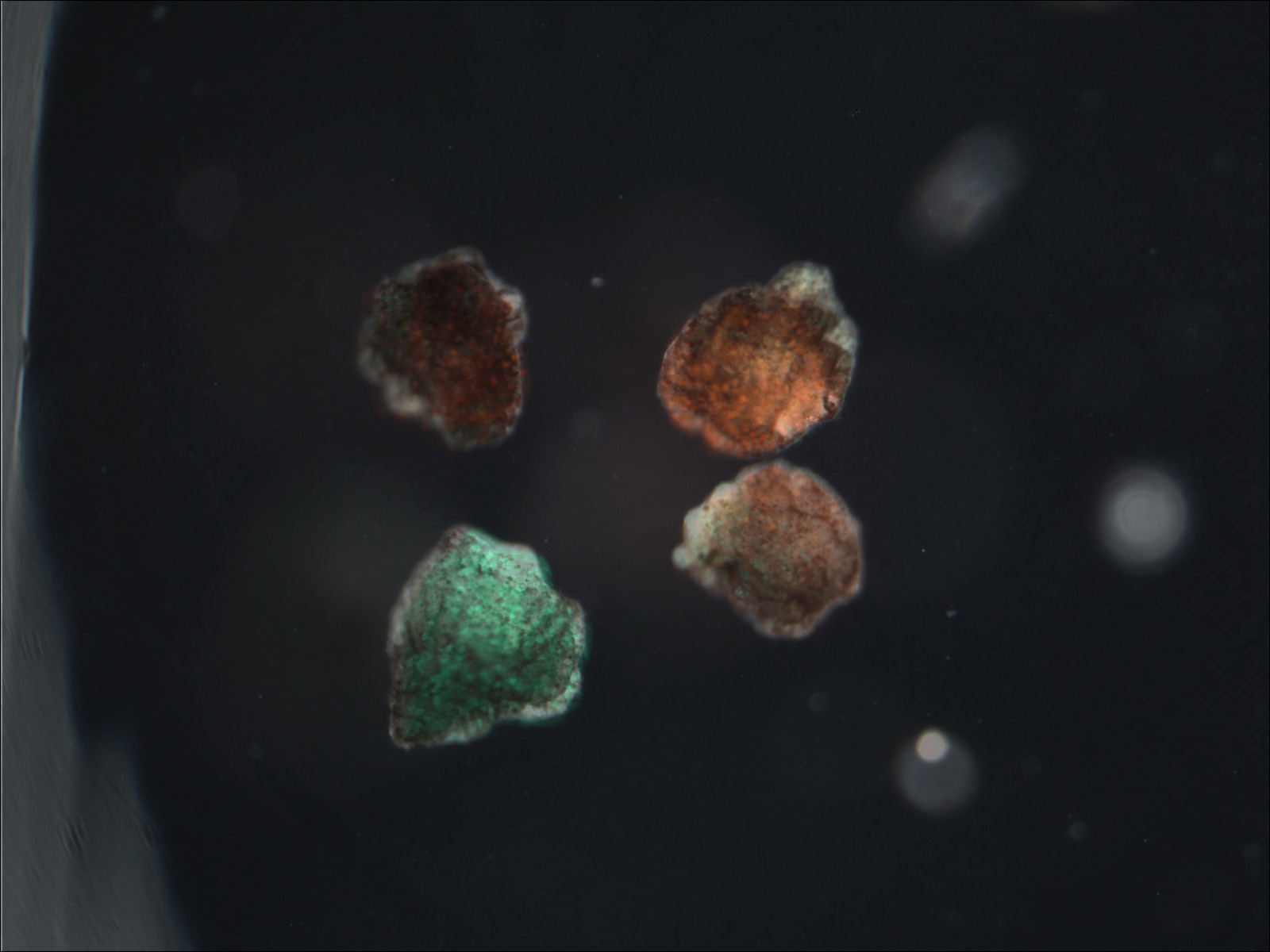
Living robots can record experience by changing color.

Trails left by living robots as they swim across a Petri dish coated with a thin layer of particles.

A group of living robots over a dollar bill for size comparison.

A single living robot mounted on a slide for size comparison.
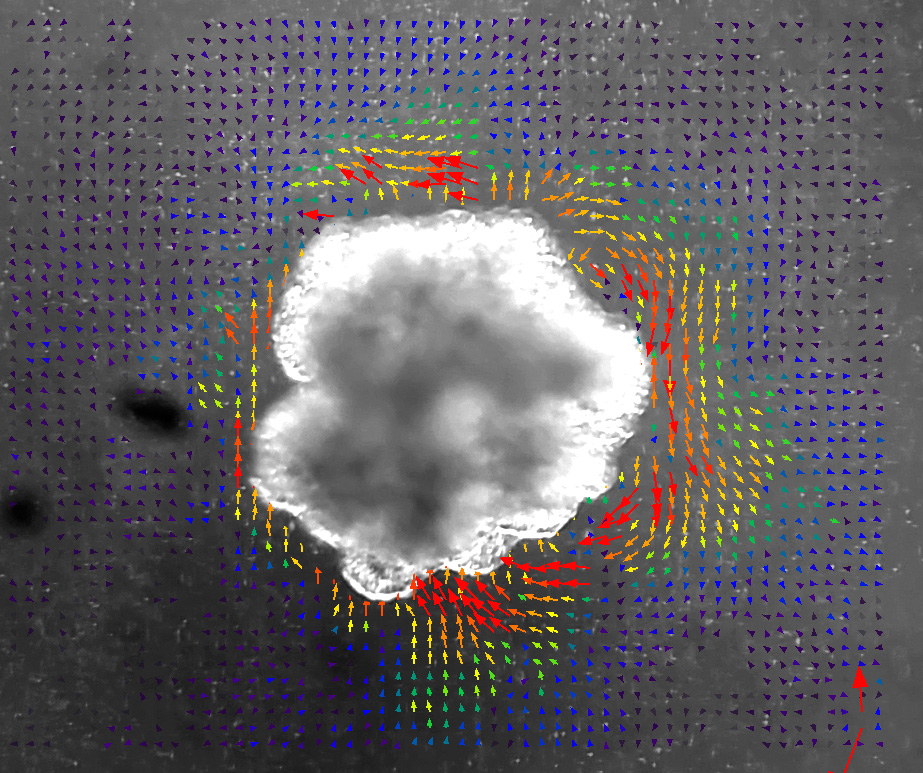
A force diagram showing the flow generated by a living robot as it swims. The direction of the arrows indicates the direction of the flow, and hotter colors indicate more flow than cooler colors.
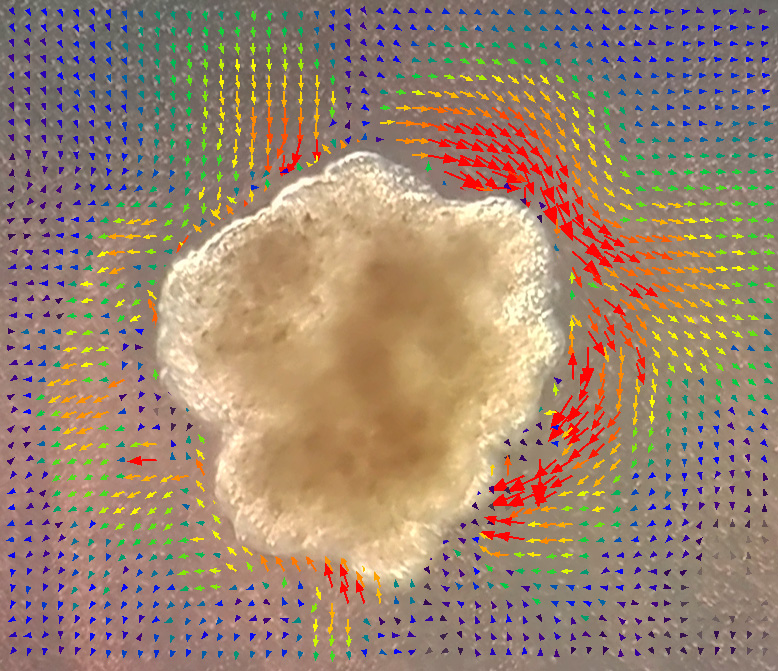
A force diagram showing the flow generated by a living robot as it swims. The direction of the arrows indicates the direction of the flow, and hotter colors indicate more flow than cooler colors.